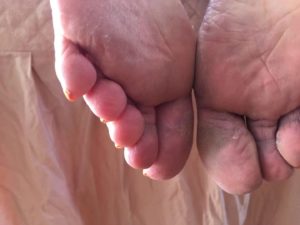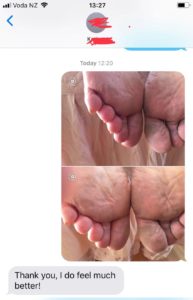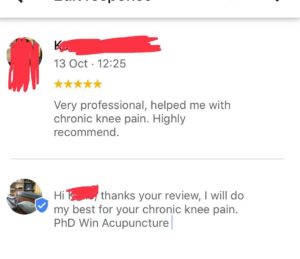Today I see a patient who has long-term left knee pain, because of its particularity. it is recorded as follows. Sharing with friends.
A Patient, European, female, 38 years old. More than a year of pain in the left knee. A year ago, there was no cause of pain in the left knee joint, a slight swelling, and it was impossible to walk long distances and stand for a long time. The pain is heavier in THE BACK OF KNEE. After the activity is aggravated and the bed rest is relieved. Doing MRI examination, there is a meniscus injury in the left knee. Did arthroscopy surgery four months ago, the pain was slightly relieved after the operation, and it was still impossible to walk and exercise normally. Two months later after the operation, the pain in the knee got worse, taking painkillers was ineffective and some rehabilitation treatments, but they were also ineffective. Her friend recommend me to her, so coming to see me today.
Check Knee pain and pain index 8/10 when walking in the treatment room. Passive knee joint movements, no pain, no restrictions. During passive knee movements, I can hear the snoring in the LEFT KNEE joint. No swelling, no tenderness. It can be seen that there are two scars from surgery ON the knee. During the inspection, the length of both legs is different, and the left leg is obviously shorter by about two centimetres. The obvious tenderness on the point of the left lumbosacral joint.

before manipulation
Diagnosis, dislocation of the left lumbosacral joint
After the regulation of the left lumbosacral joint, and once, the pain in the knee joint is significantly relieved. When walking, the pain index reduces to 3/10 from 8/10. The patient is very happy and grateful. This manipulation method of manual reduction is simple, fast and effective. The whole treatment process is completed in a few minutes. Going to bed, treatment, getting out of bed, be amazed!

after manipulation

sending a message to me

leaving a review on my google business map
Experience: If there is knee pain, any doctor first considers the local problems of the knee, when the MRI examination reports meniscus injury, the doctor’s diagnosis of knee pain is basically determined. So doing the arthroscopy surgery for the knee pain is a matter of course. At this time, no someone dares suspect the diagnosis and treatment. If she found me, I found that there were long and short legs, and I could not stop her from doing the surgery. Because of facing an expert, and a report of MRI.
I am not prophetic, she is still suffering from knee pain after her surgery, and I only consider knee pain caused by other factors. For the treatment of the former doctor, it is to rule out the diagnosis for me.
The results of MRI examinations are not the only factor in diagnosing the disease. Doctors must combine with clinical. The positive findings of MRI are not necessarily the cause of the disease, maybe it is only potential damage to the body. There are many potential injuries in the body that do not necessarily cause symptoms and discomfort.
Clinically, there are many non-local causes of knee pain. Therefore, patients with knee pain, especially when local symptoms and signs are not obvious, must consider the non-local causes of knee pain.
 中文微信:nzacupunctureclinic
中文微信:nzacupunctureclinic
Leave a reply